| |
BIOGRAPHICAL SKETCH
Childhood and Teens
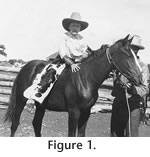 Charles Repenning was born in Oak Park, Illinois, on 4 August 1922. He was raised in Oak Park as the eldest of three sons of Albert Ellsworth Repenning and Estelle Vaillencourt Repenning. None of the brothers (Charles, William, and Peter) were given a middle name at birth, but at some point all of them adopted their father's name, Albert, as a middle name. Charles was known by many nicknames through his life, including "Chuck," "Scotty," and "Rep," as well as other more colorful names he adopted for himself in his correspondence. Charles Repenning was born in Oak Park, Illinois, on 4 August 1922. He was raised in Oak Park as the eldest of three sons of Albert Ellsworth Repenning and Estelle Vaillencourt Repenning. None of the brothers (Charles, William, and Peter) were given a middle name at birth, but at some point all of them adopted their father's name, Albert, as a middle name. Charles was known by many nicknames through his life, including "Chuck," "Scotty," and "Rep," as well as other more colorful names he adopted for himself in his correspondence.
His professional career as a geologist, paleontologist, and mammalogist was foreshadowed by his childhood interests and activities. At an early age he developed a love of rocks and animals. His tenacity in pursuit of those interests was also displayed at an early age. On a family outing to his Uncle Bill Sniff's horse ranch in southeastern Colorado when he was a young boy, he grew attached to a horse that shared his name, "Chuck" (Figure 1). He wanted to bring the horse home with him, so his uncle told him that he would sell him the horse for $60—if he could raise the money!
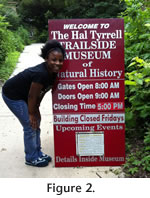 That was a small fortune for a young boy in those days, but on a return visit the next year, the enterprising young Charles surprised his family by producing the $60, only then to have to suffer the news that his front yard in Oak Park was insufficiently productive to maintain a healthy horse. That was a small fortune for a young boy in those days, but on a return visit the next year, the enterprising young Charles surprised his family by producing the $60, only then to have to suffer the news that his front yard in Oak Park was insufficiently productive to maintain a healthy horse.
His affinity for dirt was to the continual despair of his hardworking mother, and he was constantly in trouble for introducing it into his home via his clothing, shoes, hair, and hands.
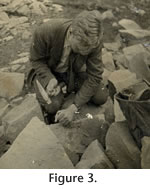 When Chuck was nine years old, The Trailside Museum opened near his home and became a favorite spot for afternoon and weekend adventures (Figure 2). Exhibits were displayed in an old Victorian house, and living representatives of local wildlife were kept as part of the facility.
The grounds afforded many opportunities for wildlife observation and quiet reflection. It was here that Chuck developed a lifelong love of nature, the outdoors, and rocks. He began building his own collections of local fossils and rocks (Figure 3). When Chuck was nine years old, The Trailside Museum opened near his home and became a favorite spot for afternoon and weekend adventures (Figure 2). Exhibits were displayed in an old Victorian house, and living representatives of local wildlife were kept as part of the facility.
The grounds afforded many opportunities for wildlife observation and quiet reflection. It was here that Chuck developed a lifelong love of nature, the outdoors, and rocks. He began building his own collections of local fossils and rocks (Figure 3).
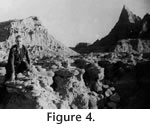 By
the time he was in his early teens he had taken control of a room in the attic, outfitted it with tables, and established a personal display of rocks, minerals, and fossils, each accompanied by a carefully hand-lettered description. During his high school years, he took road trips, accompanied by his brother William, and expanded his knowledge of geology (Figure 4). An influential high school teacher named Ms. Turner encouraged him to believe that it was possible to make a career out of those interests and inspired him to pursue his dreams of a higher education in the sciences. He appreciated her interest in him so much that she was an honored guest at his wedding. For the rest of her life, he made a point to visit her home in Brookfield, Illinois, whenever he was in Chicago, and even brought his children to visit her. By
the time he was in his early teens he had taken control of a room in the attic, outfitted it with tables, and established a personal display of rocks, minerals, and fossils, each accompanied by a carefully hand-lettered description. During his high school years, he took road trips, accompanied by his brother William, and expanded his knowledge of geology (Figure 4). An influential high school teacher named Ms. Turner encouraged him to believe that it was possible to make a career out of those interests and inspired him to pursue his dreams of a higher education in the sciences. He appreciated her interest in him so much that she was an honored guest at his wedding. For the rest of her life, he made a point to visit her home in Brookfield, Illinois, whenever he was in Chicago, and even brought his children to visit her.
Chuck began his college education at Carleton College in Northfield, Minnesota, in the fall of 1940 and was enrolled there when the attack on Pearl Harbor brought war to the United States. He and a high school friend who also went to Carleton took long walks together discussing whether they should enlist, with Chuck habitually playing with pebbles in his pocket to help him think. He remained in school through February of 1943, and then he joined the Army (Figure 5).
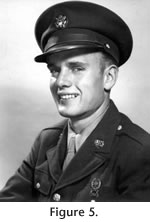 World War II World War II
Written Accounts. As is true of many veterans, Repenning often was reticent to discuss his war service. He wrote
"It is commonly noted that many who have survived war don't want to talk about it. It is not so much that they don't want to talk about it as it is that they are afraid to talk about it because it might hurt themselves too much. I have sort of dodged the issue by only remembering and telling the humorous parts of it. I don't want to remember the {other parts}" (Repenning, letter to Jeanne Forsberg, 10 August 1998).
He wrote three accounts of his experiences during WWII. The first is a 21-page account entitled 'Story' and was written in France in May of 1945 (Repenning 1945a). A surviving copy includes a two-page appendix entitled "A Pledge of Allegiance" that was authored on 21 June 1945 (Repenning 1945b). The second account was compiled in January 1998, consists of an 11-page compilation of relatively brief accounts of thoughts and memories from the war years, and was included in a packet of unpublished 'Writings by Charles A. Repenning' (Repenning 1998). The third account was written 54 years after the war, apparently in response to pressure from his family and friends to document more thoroughly some of his experiences. It is dated 24 November 1999, and is a 39-page unpublished report entitled 'Half A Century Plus Five Years Ago' (Repenning 1999).
Those accounts are concerned mainly with the events leading up to his capture (Repenning 1945a), his time spent as a prisoner of war and his escape (Repenning 1999), and the eventual return home (Repenning 1945b;
1999). All are on file in the Repenning Correspondence archives of the Vertebrate Paleontology Laboratory at The University of Texas at Austin. Those documents are the primary sources for the brief narrative that follows.
Training and Arrival in Europe. Chuck reported for his pre-induction physical examination and moved through the process easily until, at the end of the physical, the examining doctor casually asked him if he had a girlfriend. When he answered "no" the doctor was visibly shaken and said "WHAT?" Chuck explained that he recently had a girlfriend, but that she had decided to go with another boyfriend from Minnesota. Rep later wrote "So he passed me. But I bet if I had said "I like boys better" I would have been rejected. I thought about that many times later on while I was waiting to hear the next bullet or bomb, and wondered if I should have explained" (Repenning 1998, p. 2).
 His military training took place in Oregon, California, and Colorado, and Chuck was known among his colleagues for delivering impromptu lectures about the local rocks and landscapes (a practice he continued later as they marched through western Europe). He adopted the name 'Scotty' at this time in an effort to draw attention away from the fact that the name 'Repenning' was of German origin (Figure 6), a ruse he maintained through the war years; when interrogated after his capture, he insisted the name was Scottish (Repenning, letter to Peter Repenning, 15 September 1999). His military training took place in Oregon, California, and Colorado, and Chuck was known among his colleagues for delivering impromptu lectures about the local rocks and landscapes (a practice he continued later as they marched through western Europe). He adopted the name 'Scotty' at this time in an effort to draw attention away from the fact that the name 'Repenning' was of German origin (Figure 6), a ruse he maintained through the war years; when interrogated after his capture, he insisted the name was Scottish (Repenning, letter to Peter Repenning, 15 September 1999).
He served in L Company of the 415th Infantry Regiment in the 104th Infantry Division, and achieved the rank of Corporal. The 104th Division left Camp Carson, Colorado, in the middle of August 1944, and crossed the Atlantic in a naval convoy sailing from New York Harbor on 27 August. Repenning remembered that about half-way across, they picked up a German radio report that the ship he was on had been sunk (Repenning 1999, p. 38). As part of the first U.S. Army division to sail directly from the United States to France, he landed safely at Cherbourg, France, on 7 September 1944. The destruction on shore was a sobering introduction to the realities of war: "There were big boats lying on their sides in the shallow water and not a single building left standing for about five blocks back from the shoreline. They couldn't dock the boat because there were no piers, so they came out in big inflatable barges and unloaded us. No shooting, but it was enough to scare any newcomer to war back to the USA. I didn't like it" (Repenning, letter to Christopher Bell, 15 June 2001, p. 1). His unit moved through France into Belgium, then into Holland, and eventually entered Germany as part of the allied attacks along the Siegfried Line.
Capture and Internment. In early November, Repenning's unit was preparing for an attack at the town of Stolberg, approximately 5 km east of Aachen. Repenning was a designated BAR-man for his squad, carrying the portable, but heavy, Browning Automatic Rifle. When the attack on Stolberg began, his unit advanced under heavy fire across a railroad track into some row houses. The next row of houses was about 75 meters away, across an open area filled with small vegetable gardens. Heavy machine gun fire was coming in when 'Scotty' saw his BAR Assistant Gunner, Al Torchia, run across the garden area and into the second row of houses. 'Scotty' paused only long enough to cuss the Sergeant who had sent his friend out alone, then ran across the gardens to provide support. They maintained a two-man offensive in the second row of houses, but their platoon did not follow their advance, and eventually the two were forced to retreat back into the first row of houses. Two men providing covering fire for them were wounded just as Torchia and 'Scotty' rejoined the platoon.
They then cleared the basement of a house, narrowly avoiding death from a dysfunctional booby-trap at the bottom of the stairs. The basement was previously used as a bunkroom by the Germans, but now was set up as a temporary aid-station for the wounded. A counter-attack began soon, and 'Scotty,' Torchia, and one other man were defending from within the house, while other men were out back covering the flanks. Soon, the men inside the house were informed that the platoon leader was pulling them back towards the railroad tracks. They yelled down into the basement to bring the wounded up, but nobody came; the medic had removed their boots and put them into bunks to rest, and it was taking a long time to get their boots back on. The men outside the building pulled back, and the men in the house were abandoned just as the counter-attack intensified.
During the ensuing battle, Repenning was blown off his feet and thrown against a wall by a blast from an anti-tank rocket that exploded on the floor about a meter away from him. He was dazed and deafened, but he continued to hold a position from the hallway above the basement stairs, convinced that they could still break out before they were surrounded. Small arms fire then blasted glass into his face, and he was temporarily blinded in his right eye. A second anti-tank rocket exploded, throwing a companion across the room and Repenning into the wall again. His right leg was wounded, he was concussed from the blast, deafened, blinded in one eye, and now surrounded and taking fire from all sides of the house. He withdrew to the bottom of the basement steps, and immediately had to dive into the basement itself to avoid a grenade blast. It soon became clear that they were in an indefensible position, and they surrendered.
The account of his time in captivity begins with a description of a small boxcar in which he and others were being transported by rail to northern Germany. Rations sufficient for the anticipated two-day trip were issued to the prisoners, but extensive destruction of rail lines resulted in the trip lasting more than a week. He was interned at Stalag IIA, near Neubrandenburg in northern Germany. The camp had medical facilities and staff, and wounded men were kept there until their wounds were sufficiently healed for them to be assigned work. Food was minimal, the men slept two-to-a-bed, and the wooden barracks in which they lived were poor shelter against the cold as winter settled upon northern Europe. Repenning and his colleagues considered it their patriotic duty to retain open wounds for as long as possible, because men with open wounds could not be put to work. So prior to weekly examinations by the doctors, they would peel off scabs so that old wounds would be raw and 'open.' Those weeks were filled with boredom and depression, enhanced by a lack of knowledge of how the war was proceeding.
In latest December 1944 or earliest January 1945 Repenning's leg wounds had healed, and he was transferred to a farm near Neustrelitz. He found himself in the company of two dozen other American prisoners of war, living in a brick building with a central chimney that provided adequate warmth. In the winter months they formed work teams and cut trees in the nearby forest, or threshed oats from the previous season's harvest. When the snow melted, they began a potato harvest. There was a Schnapps production facility on the farm, and two prisoners were tasked with shoveling potatoes into a bin on one side of a building and tending a furnace on the other side. The one shoveling potatoes would fill his pockets with potatoes, then trade places with the other, shovel some coals to the side of the furnace, and bake his potatoes. In this way those two also were able to provide baked potatoes as a supplement to other rations. Meat was scarce on the farm, but occasionally allied fighter planes would fly over the farm, and shoot horses in the fields. In those cases, the meat was more than could be readily consumed by the farm staff and the guards, and the prisoners would get horse meat. They sometimes also received soured milk. The oats and potatoes the prisoners pocketed provided an essential additional food source, and Rep was convinced that being assigned to the farm for work was the only reason he survived captivity.
Escape and Homecoming. In April 1945, the sounds of guns from the advancing Russian army were audible to the east. Their guards informed the prisoners that they had received orders to shoot all POWs, but were refusing to do so. Instead, the prisoners from the farm joined others from the region in a march to the west. Approximately 500 prisoners began that march, and it was here that Repenning was first reunited with Al Torchia. They soon separated again when Torchia joined a group who decided to head east towards the Russians. Repenning stayed with a larger group that marched west under guard, moving only at night. By the 6th night of the march, Repenning was tired, footsore, and out of water. As the column passed what appeared to be an abandoned farmhouse, he stepped out of line and dropped into a ditch beside the road, then hid behind a hedge as the rest of the column marched past. He found the farmhouse well and was pumping water into his canteen when he was challenged by a German soldier. He was escorted into the farmhouse which, far from being abandoned, was merely draped with blackout curtains and was occupied by the remains of a German company. They were eating at a large table when Repenning was escorted into the room. After a few minutes of discomfort, it became clear that they wanted Repenning to assist them by serving as translator when they pursued their plans to surrender to the American army. He explained that in his experience, every time German and American soldiers approached one another, they were shooting, and he declined the invitation to accompany them. He was allowed to depart, and he rejoined the column of POWs. As the prisoners were being marched into a large warehouse to bed down during daylight hours, Repenning and some friends decided the warehouse was an excellent bombing target, and stepped out of line again, escaping into the surrounding area to make their own way back to allied lines.
A series of adventures followed, including stopping for a night on the porch of a building that turned out to be a local Gestapo Headquarters that was hastily abandoned as they attempted to sleep. They entered the town of Parchim on the River Elde (which Repenning took to be a spelling error of Elbe) and were confronted by a mass of refugees moving to the west. Civilians and German soldiers were using every imaginable conveyance to haul their possessions. The escaped POWs were conspicuous because they were of conscription age but were not in uniform. On foot, they were able to move much faster through the chaotic traffic jam, and they passed through the crowds unmolested. As a result, Repenning became convinced that Germany was on its last legs.
On the far side of Parchim they entered a forest that was littered with items people did not want to carry into American lines. Those included German uniforms and, especially, weapons of every description. Repenning remembered a promise made to his younger brother, and began searching for a Luger, a standard issue German army pistol. He soon found himself alone and heard voices in the tress calling to him. He turned and saw three SS soldiers waving him over. One carried a submachine gun on his shoulder, so Repenning went to them. They told him they were pleased to see an American and were looking forward to being rearmed by the Americans so they could join together to fight the Russians. Although this surprised him, he later heard the same thing from other Germans he met.
As he continued his walk along the side of the road, searching the ditches for a Luger, he saw a pair of U.S. combat boots, and looked up to see an American soldier; it was his first contact with the U.S. Army since his capture. The soldier he met was carrying a belt full of pistols over his shoulder. Repenning explained that he was an American who had escaped from a prison camp, and that he was looking for a Luger. The soldier dumped his load of pistols and asked "which one is a Luger?" Repenning identified one, and the soldier gave it to him. The soldier moved on, and Repenning sat down on the roadside to figure out how the Luger worked. The same three SS soldiers emerged from the trees, gave him a lesson on the pistol, then discarded their weapons and all uniform garments identifying them as members of the SS, and moved on to the west.
Repenning crossed back into allied-controlled territory and into Ludwigslust. He was housed temporarily in a Luftwaffe officer's quarters at a former German airfield. With little else to do, he looked for souvenirs, eventually claiming a ceremonial sword, and a collection of watercolors depicting historical German military uniforms (the Luger, sword, and watercolors all were stolen at the time of his murder, and only the watercolors were recovered; Rep had retained the Luger instead of giving it to his brother).
He was then trucked to Hannover, from which he took his first airplane flight, landing in Nancy, France, where he was transported by truck to a RAMP (Rescued American Prisoners) camp. There, he took his first bath since August of 1944 and found his weight was 125 pounds, less than he had weighed when he entered high school eight years earlier. Free ice cream was available at the camp, but proved too rich for a stomach now accustomed primarily to potatoes and bread. He found the recreation hall, obtained some paper, and wrote "Story" (Repenning 1945a) in anticipation that his story would "ultimately be demanded either verbally or in writing" (Repenning 1945a, p. 1). He was then transported by truck to Le Havre where he was encamped in a tent in the grassland above the beach, awaiting transport home.
He returned to the United States aboard the Admiral Buckner, a tourist liner drafted into military service. On June 20, 1945, he saw the U.S. coastline on the horizon, and found himself humming 'American the Beautiful.' He entered the Chesapeake Bay and noticed "There were green trees. The port installations were not twisted, shattered frameworks. The shore was not covered with debris. The buildings were not hollow shells. This was America, the land of the free. It looked strange" (Repenning 1945b). As they pulled up to the pier at Newport News, Virginia, the man next to him turned and said "Now I can believe it."
Aftermath. Although he seldom discussed them, his experiences during the war were important in Repenning's life and continued to have an impact on him for many decades. For most of his time in captivity, Repenning struggled with a self-imposed condemnation for cowardice. Following his return to American lines, he was reconciled to the fact that he had found himself in Stolberg in a completely hopeless situation, with death as the only alternative to surrender. While he was in that basement, he remembered thinking that there were some people back home who would want to see him again. He lived to see those people, but carried a heavy emotional and psychological burden that did not begin to clear until over 50 years later. The quiet solitude afforded by field work in remote desert areas helped him with a transition back to a life he had left behind. But he reacted to backfiring cars, and avoided crowded places, especially dark ones like theaters, for the rest of his life.
In 1995 the 14th Congress of the International Union of Quaternary Research (INQUA) was held in Berlin. Many colleagues who did not know of or understand Rep's experiences during the war tried to convince him to attend. His polite responses usually were something like "I can't even come close to affording attending INQUA in Berlin" (Repenning, letter to Robert Martin, 9 May 1995, p. 3). In a more candid letter he noted "People forget so easily... what war is... I'm pure "Aryan" German but Berlin is too close to where I don't like being for me" (Repenning, letter to Christopher Bell, 15 May 1995, p. 1).
Despite his experiences, Repenning returned from the war with a measure of respect for his captors, and the small considerations they provided to him and his fellow captives (like pretending not to notice when they stole potatoes). In the wake of the media coverage of prisoner-abuse by American soldiers in Iraq, Tom Regan, columnist and blogger for the Christian Science Monitor, once quoted from an email he received from Repenning (Regan 2009) which related Rep's experiences as both captor and captive, noting, in part "It took me two weeks of constant combat to realize that those guys shooting at me had to live in the same mud and snow that I did. A kind of compassion built up, and when they surrendered we were considerate of them." But Rep also noted that some Americans without combat experience were hard on German prisoners, relating one incident in which a wounded German soldier collapsed when jumping from a truck, only to be clubbed with a gun butt by an American MP. When Repenning himself later jumped from the boxcar in which he had been confined, feverish from infected wounds, he collapsed and waited for a rifle stock to smash into his head. Instead, he was lifted to his feet and escorted to a tree stump where he could rest and regain himself. "I wondered about this and other kindnesses in comparison to the way the MPs treated our prisoners, and gradually realized that the guards were all front-line soldiers, sent to guard duty as a rest, or 60 year-old Germans that were unfit for combat but had learned the way the world went. They almost all had compassion for us... That's how prisoners should be guarded, by people from the fighting front or by old men. Not by youngsters that haven't learned compassion for the enemy" (quoted by
Regan 2009; those incidents and thoughts were also expressed at greater length by
Repenning 1999, p. 1-6).
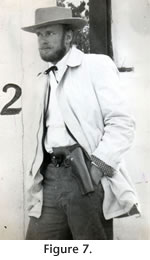 Higher Education and Family Life Higher Education and Family Life
Shortly after he returned home from the war, Chuck returned to school aided by the GI Bill. From January of 1946 through June of 1947 he was enrolled at the New Mexico School of Mines (Figure 7). When the school administration changed and the existing
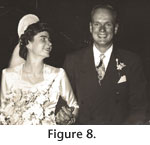 geology and mining faculty were discharged, he transferred to the University of New Mexico (UNM), where he was enrolled from summer of 1947 through spring of 1949. He received his BS in geology from there in 1949. While in summer school at UNM in 1947 he met Nancy Derryberry on a blind date. He soon moved into a house a block away from her family home. Their relationship grew as a result of her mother's decision that Chuck needed 'mothering,' and the consequent invitations to him to join their family for dinner. In those days, he always helped Nancy wash the dishes after dinner, a practice that ended abruptly upon their marriage on 17 September 1949 (Figure 8). geology and mining faculty were discharged, he transferred to the University of New Mexico (UNM), where he was enrolled from summer of 1947 through spring of 1949. He received his BS in geology from there in 1949. While in summer school at UNM in 1947 he met Nancy Derryberry on a blind date. He soon moved into a house a block away from her family home. Their relationship grew as a result of her mother's decision that Chuck needed 'mothering,' and the consequent invitations to him to join their family for dinner. In those days, he always helped Nancy wash the dishes after dinner, a practice that ended abruptly upon their marriage on 17 September 1949 (Figure 8).
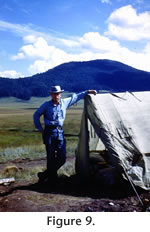 Repenning had taken a summer job with the USGS in 1948, and immediately after graduating from UNM he accepted a full-time position with the USGS. His first field project was in the Valle Grande in New Mexico (Figure 9), but he soon was assigned to produce geologic maps of the Hopi and Navajo Reservations. Following their honeymoon (partly spent shuffling project vehicles from Detroit to Arizona;
Figure 10), he and Nancy lived in a trailer together in Lukachukai, Arizona, for 18 months. They moved to Albuquerque when she became pregnant with their first child. Nancy then remained in Albuquerque while Chuck alternated working two weeks on the reservation and being home for one week in Albuquerque. Their first child, Jeanne Lorraine Repenning, was born in Albuquerque in August 1951. As more personnel were assigned to the mapping project, an official headquarters was established in Holbrook, Arizona, and the Repenning family moved there in 1951. Their second child, John ("Jack") Allen Repenning was born in Holbrook in May 1953. Repenning had taken a summer job with the USGS in 1948, and immediately after graduating from UNM he accepted a full-time position with the USGS. His first field project was in the Valle Grande in New Mexico (Figure 9), but he soon was assigned to produce geologic maps of the Hopi and Navajo Reservations. Following their honeymoon (partly spent shuffling project vehicles from Detroit to Arizona;
Figure 10), he and Nancy lived in a trailer together in Lukachukai, Arizona, for 18 months. They moved to Albuquerque when she became pregnant with their first child. Nancy then remained in Albuquerque while Chuck alternated working two weeks on the reservation and being home for one week in Albuquerque. Their first child, Jeanne Lorraine Repenning, was born in Albuquerque in August 1951. As more personnel were assigned to the mapping project, an official headquarters was established in Holbrook, Arizona, and the Repenning family moved there in 1951. Their second child, John ("Jack") Allen Repenning was born in Holbrook in May 1953.
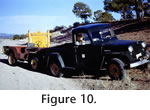 The mapping project was a fruitful one for Rep, resulting in numerous publications issued in the 1950s and 1960s. On some of his published maps, Rep placed symbols marking the occurrence of vertebrate fossils. Those marks later led other vertebrate paleontologists to localities that yielded an incredible wealth of new knowledge (for example, in the Kayenta Formation on the Navajo Reservation, where both Harvard University and The University of Texas at Austin later conducted fruitful paleontological research). The mapping project was a fruitful one for Rep, resulting in numerous publications issued in the 1950s and 1960s. On some of his published maps, Rep placed symbols marking the occurrence of vertebrate fossils. Those marks later led other vertebrate paleontologists to localities that yielded an incredible wealth of new knowledge (for example, in the Kayenta Formation on the Navajo Reservation, where both Harvard University and The University of Texas at Austin later conducted fruitful paleontological research).
In 1955 Repenning was transferred to the Menlo Park office of the USGS in California. The family moved to Palo Alto that year, where they stayed in a rental house until a new one was completed in Mountain View in 1956. The family remained, and grew, in the Mountain View home until 1982. Their third child, Patricia ("Pat") Ellen Repenning, was born in December of 1956. Their fourth child, William ("Bil") Charles Repenning, was born in May, 1968.
T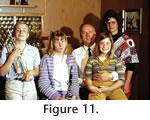 he house in Mountain View had a large, fan-shaped backyard, which came to serve as a neighborhood meeting place for children and adults alike. The Repennings hosted block parties on holidays, helped to forge a strong sense of community among their neighbors, and provided a rich and supportive learning and playing environment for all the neighborhood children (Figure 11,
Figure 12). Rep was the local 'Pied Piper,' cheerfully taking any and all available children on nature adventures to the beach to poke around in tide pools, or to sandy dunes to dig up fossilized bones. Most stories of him from about this time end with "and he let them bring things home, to the children's delight and their mothers' consternation." Nancy accepted her husband's eccentricities with good humor and still delights in telling stories of his many exploits. She was a welcoming hostess to the many paleontologists who came from around the world to visit, consult, and collaborate with Rep. Those included many of the great paleontologists of the day (Repenning, letter to Jeanne Forsberg, 1 March 1999). Nancy also maintained an active life outside the home by starting an after-school program on Wednesday afternoons for grade-school children, serving as president of the local school board, and volunteering in several organizations. he house in Mountain View had a large, fan-shaped backyard, which came to serve as a neighborhood meeting place for children and adults alike. The Repennings hosted block parties on holidays, helped to forge a strong sense of community among their neighbors, and provided a rich and supportive learning and playing environment for all the neighborhood children (Figure 11,
Figure 12). Rep was the local 'Pied Piper,' cheerfully taking any and all available children on nature adventures to the beach to poke around in tide pools, or to sandy dunes to dig up fossilized bones. Most stories of him from about this time end with "and he let them bring things home, to the children's delight and their mothers' consternation." Nancy accepted her husband's eccentricities with good humor and still delights in telling stories of his many exploits. She was a welcoming hostess to the many paleontologists who came from around the world to visit, consult, and collaborate with Rep. Those included many of the great paleontologists of the day (Repenning, letter to Jeanne Forsberg, 1 March 1999). Nancy also maintained an active life outside the home by starting an after-school program on Wednesday afternoons for grade-school children, serving as president of the local school board, and volunteering in several organizations.
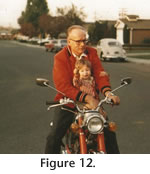 A portion of their backyard was walled off with bamboo screening and was designated as 'the bone yard.' The screen was festooned with African masks intended to frighten away the overly curious. It was there that Chuck would process animal skeletons in support of his research. In the early days in Mountain View, he would borrow charcoal grills from the neighbors to set up numerous boiling pans as he rendered a carcass. Later he obtained a large cauldron that would accommodate even fairly large remains. He received the carcasses of animals that died at the San Francisco Zoo and would either bury or boil them to prepare the skeletons. When exotic animals were obtained, he found it hard to resist the opportunity to educate the neighborhood children, and would 'exhibit' the bodies of zebras, emus, and other animals under the plum tree in the front yard. A portion of their backyard was walled off with bamboo screening and was designated as 'the bone yard.' The screen was festooned with African masks intended to frighten away the overly curious. It was there that Chuck would process animal skeletons in support of his research. In the early days in Mountain View, he would borrow charcoal grills from the neighbors to set up numerous boiling pans as he rendered a carcass. Later he obtained a large cauldron that would accommodate even fairly large remains. He received the carcasses of animals that died at the San Francisco Zoo and would either bury or boil them to prepare the skeletons. When exotic animals were obtained, he found it hard to resist the opportunity to educate the neighborhood children, and would 'exhibit' the bodies of zebras, emus, and other animals under the plum tree in the front yard.
When a female elephant died at the zoo, Rep went up to obtain as much of the body as he could. There were no dissection tools available, so with only the equipment he had on hand (hammer, chisel, saw), and working by the lights of his station wagon, he set to work removing the forelimb of the elephant. As he always told it, "it was a dark and stormy night," and the male elephant in the adjacent enclosure was banging forcibly against the gate, trying to find its mate. As Rep secured the first limb, the banging grew more persistent, and the elephant keeper assured Rep that they would both die if the male got out. Rep decided to call it a night, and drove the limb home. He gathered all the neighborhood children in the back yard the next day, provided tools for digging and said "find China." He deemed the hole to be deep enough when a neighbor fell in and broke her arm. The elephant limb was buried, and eventually each bone of the wrist and hand was identified and bone-to-bone contacts were labeled on each articulation surface. The specimen was later transferred to The University of Texas at Austin and is still used as a teaching specimen in the Morphology of the Vertebrate Skeleton course.
All fathers are protective of their daughters when social dating begins in earnest. Rep managed to express his personal style in this arena as well. His eldest daughter Jeanne began to date Charley Forsberg in high school. One Friday evening he arrived at the house to pick her up, only to be met on the walk by a freshly severed head of a ram, its tongue hanging out and blood running down the sidewalk. He stepped around the gore, carried on with courting, and met with approval of father and daughter as a result.
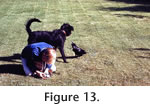 It was not only dead animals that colored the Repenning family life. In addition to a large assortment of dogs and cats they also had as pets a raven, a skunk, a raccoon, and Pekin ducks. Rep kept live shrews in the bedroom, and expressly warned that the shrews would die of fright if the children even looked in the terrarium. That irresistible temptation was only relieved when Hugh Wagner brought pet rodents to the children so they would have something they could observe safely. The raven was a family pet for many years (Figure 13), but other animals came and went for shorter durations, including a bobcat (Nancy finally put her foot down about that one and said 'no'), and three orphaned elephant seals who spent a night with the Repennings before being delivered to a marine mammal sanctuary. It was not only dead animals that colored the Repenning family life. In addition to a large assortment of dogs and cats they also had as pets a raven, a skunk, a raccoon, and Pekin ducks. Rep kept live shrews in the bedroom, and expressly warned that the shrews would die of fright if the children even looked in the terrarium. That irresistible temptation was only relieved when Hugh Wagner brought pet rodents to the children so they would have something they could observe safely. The raven was a family pet for many years (Figure 13), but other animals came and went for shorter durations, including a bobcat (Nancy finally put her foot down about that one and said 'no'), and three orphaned elephant seals who spent a night with the Repennings before being delivered to a marine mammal sanctuary.
The USGS in California and a Shift to Vertebrate Paleontology
By the early 1960s Repenning had completed and published most of his work on the geology and stratigraphy of the Four-Corners region, and shifted his focus to vertebrate paleontology. Conversations and field expeditions with John Lance from the University of Arizona in Tucson helped peak Rep's interest in vertebrate paleontology, and it was Lance who provided the stimulation that led to Rep's return to school (Repenning 1998, p.14).
In 1960 Rep shifted to half-time work at the USGS and began graduate work at The University of California at Berkeley. He was motivated to do so by a desire to learn more, and especially to expand his knowledge of vertebrate paleontology and its application to problems in stratigraphy. His strong background in stratigraphy provided a rich context for his burgeoning interest in vertebrate paleontology, and Berkeley was an excellent place to be for a talented man with those interests. He earned his M.S. in Paleontology in 1962, and completed all coursework required for a Ph.D., though he never wrote a dissertation. His M.S. thesis was acclaimed as "setting a new standard" (Repenning, letter to Jeanne Forsberg, 1 March 1995, p. 2) and was later published by the USGS (Repenning 1967a). At the time, Rep did not consider himself Ph.D. material, in part because his father had placed an almost reverent importance on that degree, but primarily because Rep felt that the main purpose of the degree was to help one get a job, but he already had a job (Repenning, letter to Jeanne Forsberg, 1 March 1995, p. 3). He left the university in 1964, and moved back into full-time fieldwork and research.
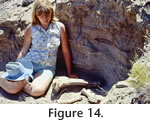 Each summer, Rep would spend time in the field and bring home fossils and live animals, and the family would go on a camping trip, usually to extremely remote areas. When his children were older, they were allowed to accompany him on fossil collecting trips and to assist with excavations (Figure 14). By the early 1960s he had already laid a foundation as a rising vertebrate paleontologist, having established the importance of continental vertebrates for correlating terrestrial and marine sections in California (Repenning and Vedder 1961), and had published on the temporal and spatial ranges of an extinct group of marine mammals, the desmostylians. He also had begun his work on fossil and modern shrews by that time and, while a student in a comparative anatomy course at U.C. Berkeley, had completed a term paper on the cranial myology of arvicoline rodents, a group that was later to consume so much of his attention. He built an extensive reference collection of fossil and modern specimens of small mammals that were stored in baby-food jars and flip-top cigarette boxes; the latter was a preferred means of storage for specimens for the rest of his life. He was rapidly developing an extensive research program centered on small mammals. Each summer, Rep would spend time in the field and bring home fossils and live animals, and the family would go on a camping trip, usually to extremely remote areas. When his children were older, they were allowed to accompany him on fossil collecting trips and to assist with excavations (Figure 14). By the early 1960s he had already laid a foundation as a rising vertebrate paleontologist, having established the importance of continental vertebrates for correlating terrestrial and marine sections in California (Repenning and Vedder 1961), and had published on the temporal and spatial ranges of an extinct group of marine mammals, the desmostylians. He also had begun his work on fossil and modern shrews by that time and, while a student in a comparative anatomy course at U.C. Berkeley, had completed a term paper on the cranial myology of arvicoline rodents, a group that was later to consume so much of his attention. He built an extensive reference collection of fossil and modern specimens of small mammals that were stored in baby-food jars and flip-top cigarette boxes; the latter was a preferred means of storage for specimens for the rest of his life. He was rapidly developing an extensive research program centered on small mammals.
In October 1964 an accidental excavation made during construction of the Stanford Linear Accelerator Center exposed the bones of ancient marine mammals, including a whale and a large desmostylian (Doty 1997). Rep visited the site to assess, stabilize, and collect the fossils, and determined that the desmostylian remains represented Paleoparadoxia, a taxon originally described from Japan. The specimen proved to be one of the most complete skeletons known, and later was designated as a new species named in Rep's honor (Domning and Barnes 2007). After the discovery of Paleoparadoxia, Rep began extensive research on seals, sea lions, and other marine mammals. Family field trips now included trips to the beach to collect fossil and modern seal and sea lion bones, and they made special trips to Punto, Colorado, Mexico, and Belize.
R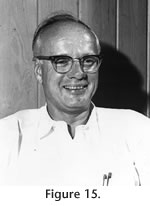 ep pursued an active and varied research program throughout his time with the USGS in California (Figure 15), and achieved a GS-15 grade in 1975. His official CV notes that in "about 1975 (record lost)" he received "some award" from the USGS, and he received a Meritorious Service Award in 1982. In addition to geological mapping projects in Utah, Oregon, and California, he conducted research on Alaskan geology and faunas, the evolution of seals and sea lions, the biostratigraphy and paleoecology of rodents, and he published his M.S. thesis work, a monographic study of shrews (Repenning 1967a) that is still influential (see dedication by
Hoek Ostende et al. 2005). He also produced a booklet for the public about the prehistory of the Palo Alto area near the Menlo Park office of the USGS (Repenning 1969). ep pursued an active and varied research program throughout his time with the USGS in California (Figure 15), and achieved a GS-15 grade in 1975. His official CV notes that in "about 1975 (record lost)" he received "some award" from the USGS, and he received a Meritorious Service Award in 1982. In addition to geological mapping projects in Utah, Oregon, and California, he conducted research on Alaskan geology and faunas, the evolution of seals and sea lions, the biostratigraphy and paleoecology of rodents, and he published his M.S. thesis work, a monographic study of shrews (Repenning 1967a) that is still influential (see dedication by
Hoek Ostende et al. 2005). He also produced a booklet for the public about the prehistory of the Palo Alto area near the Menlo Park office of the USGS (Repenning 1969).
His early efforts on small mammals were focused on their use as tools for paleoecological reconstruction, but by the mid 1960s he was exploring their potential use for intercontinental correlation across the Arctic (Repenning 1965,
1966,
1967b), and was especially intrigued by the arvicoline rodents (voles, lemmings, muskrats, and their extinct kin; also known as microtine rodents, which was Rep's preferred term). Although he recognized great potential for that work, he abruptly set it aside and did not return to it until the late 1970s. His reticence to develop his intercontinental correlation scheme was in part a result of his desire to avoid alienating Claude Hibbard, a paleontologist he respected. Hibbard had firm opinions that the North American arvicoline rodent fauna was endemically derived, and Rep's suggestion that the diversity in North America was, at least in part, a result of immigration was anathema. The discovery of Paleoparadoxia in California provided Rep with an alternative research trajectory, and his attention in the 1970s was dominated by his research on seals and sea lions. Following Hibbard's death in 1973, Rep renewed his interests in biostratigraphy and the potential for intercontinental correlations. By the late 1970s he was laying the foundation for the research program that would remain his focus for the rest of his life.
USGS in Denver and Retirement
Rep had been asked several times by the USGS to transfer to Denver, at one point being offered a major promotion. He declined the offers in part because he feared it would mean the end of his field work, and in part because other members of the family had no interest in leaving California. Rep and Nancy divorced in 1982, after 33 years of marriage. They parted amicably and remained in contact after the divorce. Soon after, Rep began a two-year period of traveling back and forth between Denver and California, before finally deciding to settle in the Denver area in 1984. He moved into a house in Lakewood, a convenient and short drive from the USGS facility. Shortly after moving to Lakewood, he renewed his interest and hobby in collecting ancient coins, and joined the American Numismatic Association and, a decade later, the American Numismatic Society. Most of his professional research and publication efforts while in Colorado were centered on the biogeography, biostratigraphy, and biochronology of arvicoline rodents, and the establishment and clarification of an integrated perspective on climatic and biotic changes that shaped the history of that group through the late Cenozoic. Aspects of the history of that research program and its lasting impact were discussed by
Bell and Jass (2011).
In 1991, he suffered a minor stroke, followed shortly after by an occlusion of femoral arteries from blood clots. He underwent an operation on his left leg, which solved the immediate problem of blood clotting, but he could not conduct rigorous field work. He claimed that reduced mobility meant he could no longer do his job (Repenning, email letter to Wighart von Koenigswald, 10 August 2001, p. 2) and he retired from the USGS in September 1992.
In 1994 he was awarded Honorary Membership in the Society of Vertebrate Paleontology. He wrote "At first this did not seem to me to be a great honor, but then I read the list of other honorary members... and came to realize that they include the giants of the profession, and it is an honor to be associated with them" (Repenning, letter to Jeanne Forsberg, 1 March 1995, p. 3). He then posted a small sign on the back door of his house (the main entrance for him, his family, and friends). It said simply 'HMSVP" with no explanation.
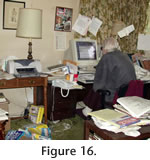 Retirement brought little in the way of change to his research activities or publication output. Although he was dismayed by the decision to close the Paleontology and Stratigraphy Branch of the USGS in 1995, he retained an office at the USGS until they imposed a ban on smoking in the facility. He was incensed because he claimed it was the U.S. Government that taught him to smoke in the first place, by providing free cigarettes during WWII. He cleared out his office with indignant disgust, and shifted all of his research activities to his home. He established three working rooms at home, and it was barely enough to contain his activities. His main home office (Figure 16) was contiguous with his bedroom; a convenience that pleased him greatly when he was working on projects late into the night. An adjacent room contained his reference collection of small mammal teeth and skeletons, a microscope, some layout space, and desk surfaces for preparation of small fossils. His basement was largely given over to housing his research library (Figure 17). Retirement brought little in the way of change to his research activities or publication output. Although he was dismayed by the decision to close the Paleontology and Stratigraphy Branch of the USGS in 1995, he retained an office at the USGS until they imposed a ban on smoking in the facility. He was incensed because he claimed it was the U.S. Government that taught him to smoke in the first place, by providing free cigarettes during WWII. He cleared out his office with indignant disgust, and shifted all of his research activities to his home. He established three working rooms at home, and it was barely enough to contain his activities. His main home office (Figure 16) was contiguous with his bedroom; a convenience that pleased him greatly when he was working on projects late into the night. An adjacent room contained his reference collection of small mammal teeth and skeletons, a microscope, some layout space, and desk surfaces for preparation of small fossils. His basement was largely given over to housing his research library (Figure 17).
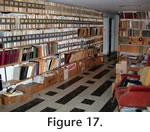 Rep worked tirelessly, but often felt that he was not getting enough done. He eliminated television from his life so he could concentrate more on his work. In 1995 he abandoned radio as well after a commentator on National Public Radio implied that the atomic bombs dropped in Japan in 1945 constituted terrorist attacks: Rep worked tirelessly, but often felt that he was not getting enough done. He eliminated television from his life so he could concentrate more on his work. In 1995 he abandoned radio as well after a commentator on National Public Radio implied that the atomic bombs dropped in Japan in 1945 constituted terrorist attacks:
"At 10 PM tonight I heard a woman give a spot news summary on Public Radio talking about [the capture of] the leader of the Poison Gas Sect at the foot of Mt. Fuji; she said he was the leader of the group who staged the worst "terrorist act in Japan in 50 years". When I got to thinking about what she was talking about, I decided that I couldn't listen to Public Radio anymore. So now I will get more work done because I have sworn off both TV and radio" (Repenning letter to Christopher Bell, 15 May 1995, p. 1).
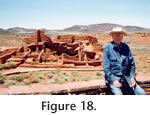 When he was fully engaged in a research project, he would focus on it for hours, seemingly unaware of the passage of time. He would occasionally call one of us (CJB) at 3 or 4 o'clock in the morning, to ask for clarification on something he'd received in the mail, or for information he needed from a paper that he did not have. After acknowledging the awkward timing with some embarrassment, he would announce that he was an insomniac, and simply was unaware of the time. On a visit soon after the first of those calls, it was revealed that he began to get tired at about 10 pm, only to then disappear into the kitchen and return with two glasses of ice and a liter of Mountain Dew soda, blissfully unaware that it was loaded with caffeine. When he was informed of the caffeine, his only response was "I had no idea!" He later asked his daughter "Why the hell didn't anyone tell me Mountain Dew contained caffeine?" Chemically induced insomnia seemed to help his productivity, so he did not immediately give up the practice, and the late-night and early-morning phone calls continued for a while longer. When he was fully engaged in a research project, he would focus on it for hours, seemingly unaware of the passage of time. He would occasionally call one of us (CJB) at 3 or 4 o'clock in the morning, to ask for clarification on something he'd received in the mail, or for information he needed from a paper that he did not have. After acknowledging the awkward timing with some embarrassment, he would announce that he was an insomniac, and simply was unaware of the time. On a visit soon after the first of those calls, it was revealed that he began to get tired at about 10 pm, only to then disappear into the kitchen and return with two glasses of ice and a liter of Mountain Dew soda, blissfully unaware that it was loaded with caffeine. When he was informed of the caffeine, his only response was "I had no idea!" He later asked his daughter "Why the hell didn't anyone tell me Mountain Dew contained caffeine?" Chemically induced insomnia seemed to help his productivity, so he did not immediately give up the practice, and the late-night and early-morning phone calls continued for a while longer.
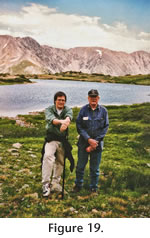 Following his retirement, he was still able to make short trips into the field by car (Figure 18,
Figure 19), but long hikes and extensive journeys into the deserts were no longer possible. In 1999 he planned what turned out to be his last major field expedition. He was accompanied by his cousin (by marriage) Sheila Stephens. They toured many of his old sites and visited friends in southern Arizona, the reservations, and other areas of the desert southwest. Rep confined himself to roadside activities, but still found ways to collect fossils. Following his retirement, he was still able to make short trips into the field by car (Figure 18,
Figure 19), but long hikes and extensive journeys into the deserts were no longer possible. In 1999 he planned what turned out to be his last major field expedition. He was accompanied by his cousin (by marriage) Sheila Stephens. They toured many of his old sites and visited friends in southern Arizona, the reservations, and other areas of the desert southwest. Rep confined himself to roadside activities, but still found ways to collect fossils.
He dedicated a significant amount of time at the Denver Museum of Nature and Science, and was actively engaged in analysis of portions of the new faunas being collected by the museum from Porcupine Cave. His initial contributions to the Porcupine Cave project were directed towards the arvicoline rodents, but by the late 1990s he began a detailed investigation of the woodrats that continued until the time of his death. His goal was to develop a biochronology of woodrats that could be integrated with that of the arvicolines. His hope was to extend a web of faunal correlations from the northern latitudes that were heavily populated with arvicolines, into the southern latitudes where arvicolines declined in abundance but woodrats were prevalent. His first assessment of woodrats was published in 2004 as a contribution to a book on the biota from Porcupine Cave (Repenning 2004).
The hypotheses he initially proposed based on his work on woodrats were, again, controversial, but that did not bother Rep. Unlike his earlier interactions with Claude Hibbard, in his later career he no longer concerned himself about challenging existing hypotheses, and accepted the potential for alienating or annoying colleagues as a result. He once wrote "To solve a problem, you have to correct misconceptions; to correct misconceptions, one cannot avoid alienating people. The story of my life" (Repenning, letter to Christopher Bell, 6 July 1993, p. 2). He sometimes joked about his seemingly endless ability to annoy people with his informed criticisms of their work (e.g., "It's kinda interesting to see how cantankerous I'm getting in my old age. Nothing is holy any more" [Repenning, letter to Christopher Bell, 21 August 1993, p. 1]; "At times, I will admit, I tend to be undiplomatic" [Repenning 1998, p. 27];). He also openly accepted the fact that he would change his interpretations, and that advances in science would require him to do so: "You know, I have never written a publication that I couldn't see some errors in within 5 years after it was published. I think this is a sign that I still am learning. And that seems good to me after 75 years of learning" (Repenning, letter to Robert Martin, 19 March 1997, p. 1).
Murder and Legacy. Rep was still engaged in learning at the time of his murder. He was recovering from a November 2003 surgery in which half of his left lung was removed to avoid the spread of a cancer. In spite of his reduced energy levels, he was still arguing with colleagues about correlations and age interpretations of various sites, providing advice about field localities that might prove useful for answering newly emergent questions, identifying fossil specimens that had been sent to him from colleagues, and continuing his correspondence. He maintained a healthy attitude and was still living by words he'd written earlier: "Well, it's a tough old world. And staying alive is the difficult thing, not death." (Repenning letter to Christopher Bell, 15 May 1995, p. 1).
Rep left behind a legacy of humor, incredible stories, a voluminous correspondence, and a wealth of scientific hypotheses, observations, and publications. He enjoyed playing with words, in person and in his correspondence. He once entered the kitchen of his Mountain View home announcing "I give you my soul" as he turned the corner and kicked his foot... the bottom (sole) of his shoe immediately separated from the rest and struck a confused and alarmed young visitor in the chest. He also quipped that "to be forewarned is to be forearmed, and that's half an octopus" (Repenning letter to Christopher Bell, 15 May 1995, p. 5).
Rep also enjoyed telling and hearing good stories, and was fond of putting forth 'teasers' in his correspondence to invite inquiries for a greater elaboration of some tale or another. He once wrote
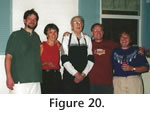 "Did you know that I am one of the few people in the world who has been shipwrecked in Arizona? Or that I got "lost" once and they not only had the Civil air Patrol out looking for me but the Air Force out of Tucson too? Or that I have once been bucked off and kicked by a donkey who really loved me? I've been attacked by a pair of wild falcons and chased by a golden eagle, and once a California condor looked me over as a possible meal. And I have been thanked by a coyote. And I have been asked by a Navajo to shoot a bear that was eating his sheep but he couldn't shoot it because it was his grandmother, but he didn't mind if I shot her. I don't really understand even Navajo religion" (Repenning 1998, p. 23). "Did you know that I am one of the few people in the world who has been shipwrecked in Arizona? Or that I got "lost" once and they not only had the Civil air Patrol out looking for me but the Air Force out of Tucson too? Or that I have once been bucked off and kicked by a donkey who really loved me? I've been attacked by a pair of wild falcons and chased by a golden eagle, and once a California condor looked me over as a possible meal. And I have been thanked by a coyote. And I have been asked by a Navajo to shoot a bear that was eating his sheep but he couldn't shoot it because it was his grandmother, but he didn't mind if I shot her. I don't really understand even Navajo religion" (Repenning 1998, p. 23).
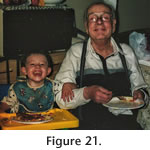 Most of those stories were never explained in his writing, but one (the coyote) was related by
Repenning (1998, p. 35), and another (the falcons) was included as part of an undated and unpublished collection of narrative poems. Most of those stories were never explained in his writing, but one (the coyote) was related by
Repenning (1998, p. 35), and another (the falcons) was included as part of an undated and unpublished collection of narrative poems.
Rep is survived by his former wife, his four children, ten grandchildren, and three great-grandchildren. He was delighted to celebrate his 80th birthday with all of his children in Denver in 2002 (Figure 20,
Figure 21). He is remembered fondly by them and many of their childhood friends, now all adults, because he made the world a more special place by opening up natural wonders for them to see, much as he had come to see them himself in his youth.
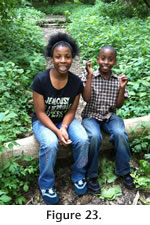 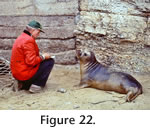 In his will, Rep requested that he be cremated. To help ensure that, he prepaid the cremation fees. He suggested that his ashes could be thrown off the Pacific coast, possibly to sift down and be washed up on the beaches among his beloved elephant seals (Figure 22). As an alternative, he proposed that his ashes could be encased in plastic key chains and sold as souvenirs at the annual Society of Vertebrate Paleontology meetings. To his children, the key chains seemed a risky proposition; what if they didn't sell? As for the former suggestion, one of us (JLRF) formerly noted that disposing of his remains "among a bunch of sex-starved, grumpy males just seems so right" (Forsberg 2010). Instead, on a beautiful Veteran's Day in 2010, his daughter Jeanne and grandson Sam returned to The Trailside Museum near Rep's boyhood home. They found a fallen tree and upended the urn containing his ashes, a fossil mouse jaw, and some hairs from his beloved dog (Figure 23). "Dad had come a full circle back to innocence, back to the place where he was happy before the war, before disillusionment and disappointment and bitterness. Instead of letting him drift among rejected suitors, I laid him to rest in a place of possibility and wonder and I gave him fossils and dog hair. He's with the places and things he loved most in the world" (Forsberg 2010). We miss him. In his will, Rep requested that he be cremated. To help ensure that, he prepaid the cremation fees. He suggested that his ashes could be thrown off the Pacific coast, possibly to sift down and be washed up on the beaches among his beloved elephant seals (Figure 22). As an alternative, he proposed that his ashes could be encased in plastic key chains and sold as souvenirs at the annual Society of Vertebrate Paleontology meetings. To his children, the key chains seemed a risky proposition; what if they didn't sell? As for the former suggestion, one of us (JLRF) formerly noted that disposing of his remains "among a bunch of sex-starved, grumpy males just seems so right" (Forsberg 2010). Instead, on a beautiful Veteran's Day in 2010, his daughter Jeanne and grandson Sam returned to The Trailside Museum near Rep's boyhood home. They found a fallen tree and upended the urn containing his ashes, a fossil mouse jaw, and some hairs from his beloved dog (Figure 23). "Dad had come a full circle back to innocence, back to the place where he was happy before the war, before disillusionment and disappointment and bitterness. Instead of letting him drift among rejected suitors, I laid him to rest in a place of possibility and wonder and I gave him fossils and dog hair. He's with the places and things he loved most in the world" (Forsberg 2010). We miss him.
|


 When Chuck was nine years old, The Trailside Museum opened near his home and became a favorite spot for afternoon and weekend adventures (
When Chuck was nine years old, The Trailside Museum opened near his home and became a favorite spot for afternoon and weekend adventures ( By
the time he was in his early teens he had taken control of a room in the attic, outfitted it with tables, and established a personal display of rocks, minerals, and fossils, each accompanied by a carefully hand-lettered description. During his high school years, he took road trips, accompanied by his brother William, and expanded his knowledge of geology (
By
the time he was in his early teens he had taken control of a room in the attic, outfitted it with tables, and established a personal display of rocks, minerals, and fossils, each accompanied by a carefully hand-lettered description. During his high school years, he took road trips, accompanied by his brother William, and expanded his knowledge of geology (

















